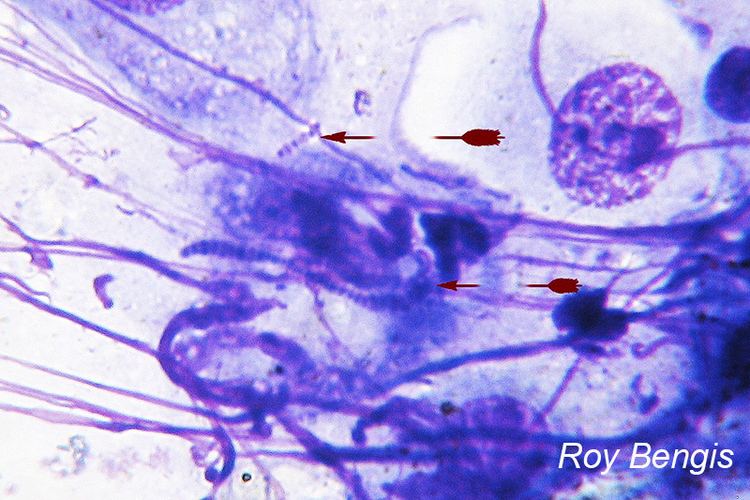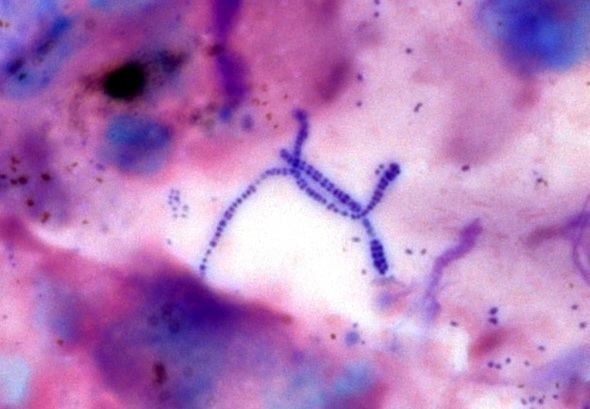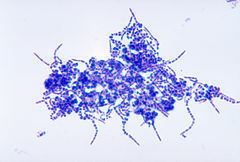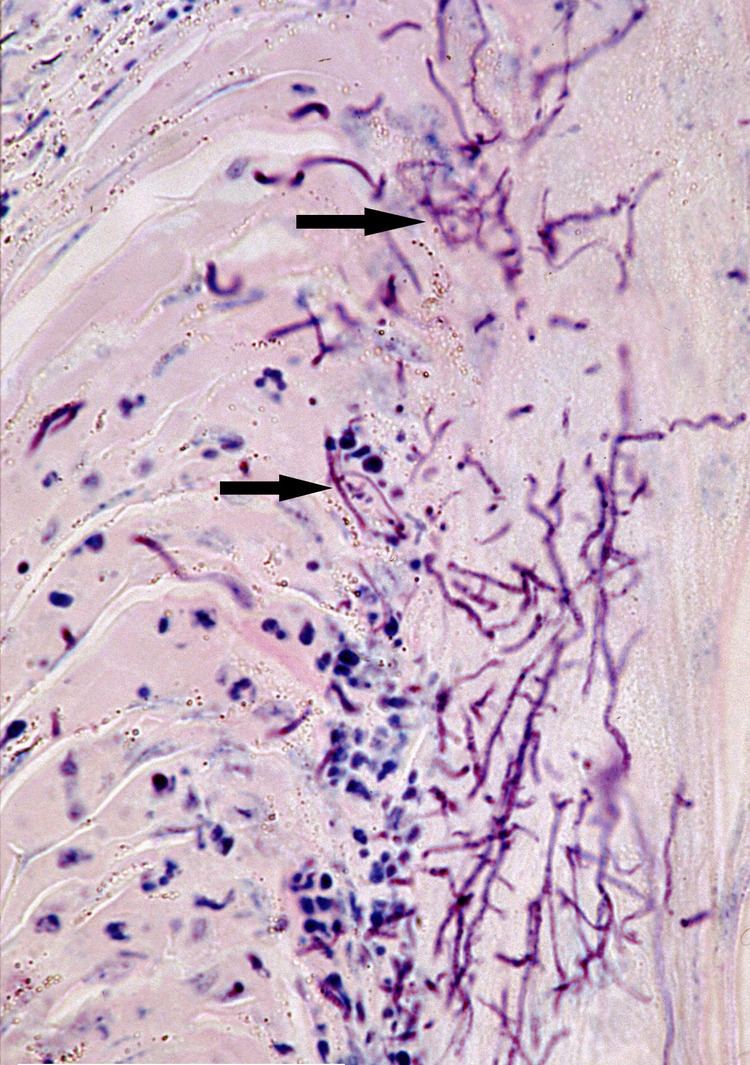Kingdom Bacteria Genus Dermatophilus Rank Species | Family Dermatophilaceae Scientific name Dermatophilus congolensis Higher classification Dermatophilus | |
 | ||
Similar Amblyomma variegatum, Actinomycetales, Trueperella pyogenes, Erysipelothrix, Corynebacterium renale | ||
Dermatophilus congolensis m v z universidad cooperativa de colombia
Dermatophilus congolensis is a gram positive bacterium and is the etiologic agent of a disease called Dermatophilosis (sometimes called Mud fever) in animals and humans, a dermatologic condition that manifests itself with the formation of crusty scabs that contain the microorganism. Some people erroneously call it mycotic dermatitis. Rainscald is another condition often seen in animals, which is also caused by Dermatophilus congolensis bacteria.
Contents
- Dermatophilus congolensis m v z universidad cooperativa de colombia
- Morphology
- Cultivation
- Pathogenesis
- Links
- References

Morphology

D. congolensis is facultative anaerobic actinomycete bacteria. It has two morphologic forms: filamentous hyphae and motile zoospores. The hyphae are characterized by branching filaments (1-5 µm in diameter) that ultimately fragment by both transverse and longitudinal separation into packets of coccoid cells. The coccoid cells mature into flagellated ovoid zoospores (0.6-1 µm in diameter). With the microscope one can observe the characteristic "tramcar line"-like D. congolensis colonies together with gram positive thin filaments and coccoid forms.
Cultivation

D. congolensis is a carboxiphylic germ, so they need carbon dioxide to properly grow on laboratory media. The germ grows well on sheep-blood enriched agarose media; the media must then be incubated at a 37 degrees Celsius temperature and a 5-10% CO
2 atmosphere. The bacteria colonies become visible in 24–48 hours. Initially they are small, with a ~1 mm diameter and with a grey-yellow colour. After 3–4 days the isolated bacterial colonies can reach a 3 mm diameter, they have a rough surface and a yellow-golden pigmentation. Around the colonies circular hemolysis zones can be seen.
Pathogenesis

D. congolensis causes severe skin infections in animals and humans. More frequently cattle, horses, sheep and goats are affected. Humans can also get this skin disease if elementary hygiene measures are not respected after dealing with infected animals. This dermatologic condition is known by many names: cutaneous streptothrichosis (on cattle, goats, and horses), "rain-scald" (on horses), "lumpy wool" (on sheep), "strawberry foot rot".

The pathogenic factors are very diverse, but the most important ones are the ones of enzymatic nature (adenase and lecitinase).
